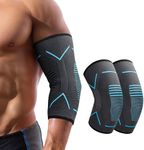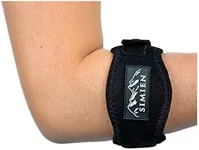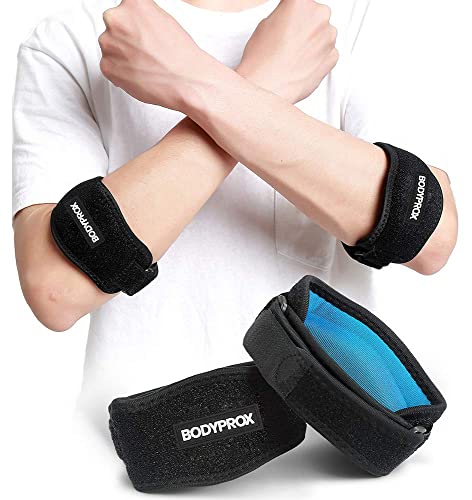Buying Guide for the Best Elbow Braces
Choosing the right elbow brace can significantly impact your comfort and recovery, whether you're dealing with an injury, managing a chronic condition, or looking for support during physical activities. The key is to understand your specific needs and how different features of elbow braces can meet those needs. Consider factors such as the level of support you require, the type of activity you'll be engaging in, and any specific conditions you might have, such as tennis elbow or arthritis. By focusing on these aspects, you can find an elbow brace that offers the right balance of support, comfort, and flexibility.Level of SupportThe level of support provided by an elbow brace is crucial as it determines how much stability and protection your elbow will receive. Support levels generally range from mild to moderate to maximum. Mild support is suitable for minor strains or for preventive measures during light activities. Moderate support is ideal for managing conditions like tennis elbow or golfer's elbow, providing more compression and stability. Maximum support is necessary for severe injuries or post-surgery recovery, offering the highest level of stabilization. Choose the level of support based on the severity of your condition or the intensity of the activity you plan to undertake.
MaterialThe material of an elbow brace affects its comfort, breathability, and durability. Common materials include neoprene, which offers good support and warmth but may be less breathable, and fabric blends that provide more breathability and comfort for extended wear. If you have sensitive skin or plan to wear the brace for long periods, look for hypoallergenic materials or those with moisture-wicking properties. Consider your personal comfort preferences and any skin sensitivities when selecting the material.
AdjustabilityAdjustability in an elbow brace allows you to customize the fit and compression level, which is important for both comfort and effectiveness. Braces with adjustable straps or Velcro closures can be tightened or loosened to suit your needs, accommodating swelling or changes in activity level. If you anticipate needing to adjust the brace frequently, look for models with easy-to-use adjustment mechanisms. This feature is particularly beneficial if you plan to use the brace during various activities or throughout different stages of recovery.
Size and FitThe size and fit of an elbow brace are critical for ensuring it provides the intended support without causing discomfort. Braces typically come in various sizes, and some offer a one-size-fits-all option with adjustable features. To find the right size, measure the circumference of your elbow or forearm as instructed by the manufacturer. A properly fitting brace should be snug but not too tight, allowing for full range of motion without slipping. Consider trying on different sizes if possible, or consult sizing charts to ensure the best fit.
Type of BraceThere are different types of elbow braces designed for specific needs, such as compression sleeves, strap braces, and hinged braces. Compression sleeves provide uniform pressure and are suitable for general support and mild conditions. Strap braces target specific areas, like the forearm, to relieve pain from conditions like tennis elbow. Hinged braces offer maximum support and are often used for post-surgical recovery or severe injuries. Determine the type of brace based on your specific condition or the level of support you require for your activities.

















